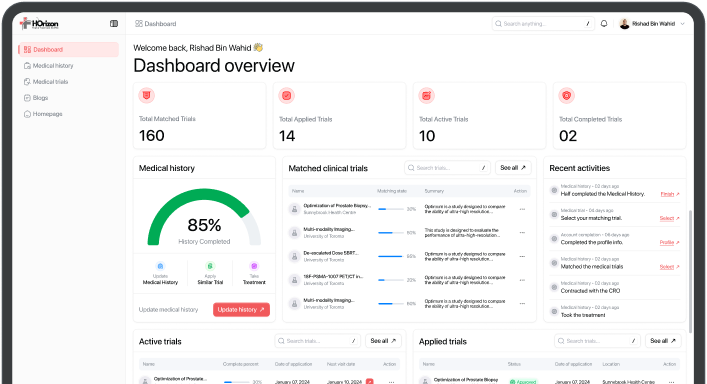
Rehabilitation for People With Advanced Cancer
Contact information
Charmaine Silva, MSc
Princess Margaret Cancer Centre
Princess Margaret Cancer Centre
Basic information
Age
117 Enrollment
Breast Cancer Cancer
Trial Details
Brief Summary
The proposed study is a Phase II, feasibility, randomized controlled preference based study. This will be conducted in Vancouver and Toronto and includes breast and colorectal cancers.
Official Title
Project 3 - Phase II, Preference Based, Randomized Controlled Trial of Group-Based, In Person Versus Virtual, Cancer Rehabilitation for People With Metastatic / Advanced Breast or Colorectal Cancers
Selection Criteria
Eligibility Inclusion Criteria
-
Age 18 years or older
Diagnosed with locally advanced incurable or metastatic breast or colorectal cancer
Eastern Cooperative Oncology Group (ECOG) performance status of 0-2
Fully independent with ambulation and transfers with or without ambulatory assistance
Palliative Performance score of >70 (moderate predictive power estimating life expectancy >6 months)
Receiving first or second line anti-cancer treatments in the metastatic / incurable setting (a relative proxy for expected survival >6 months)
Medical clearance to participate from treating physician.
Eligibility Exclusion Criteria
-
Wheelchair level community ambulation
Moderate or severe non-cancer pain (>6 out of 10 on visual analog scale)
Moderate or severe cancer bone pain (>Gr 2 bone pain (i.e., moderate pain limiting instrumental ALDs or worse) as measured on CTCAE (see below))
Severe or uncontrolled depressive symptoms (>20 on PHQ-9)
Known neurological conditions influencing cognition and preventing safe or appropriate engagement with self-management and exercise recommendations (e.g., dementia, traumatic brain injury, or brain metastasis influencing cognition or causing moderate-to-severe motor-sensory-coordination). Best determined by the referring physician or nurse practitioner.
Unable to communicate sufficiently in English to complete intervention, questionnaires, and consent.
Unwillingness to be randomized, participate in a group intervention, or attend individual physical assessments.
Inability to operate videoconferencing if preference is virtual programming
